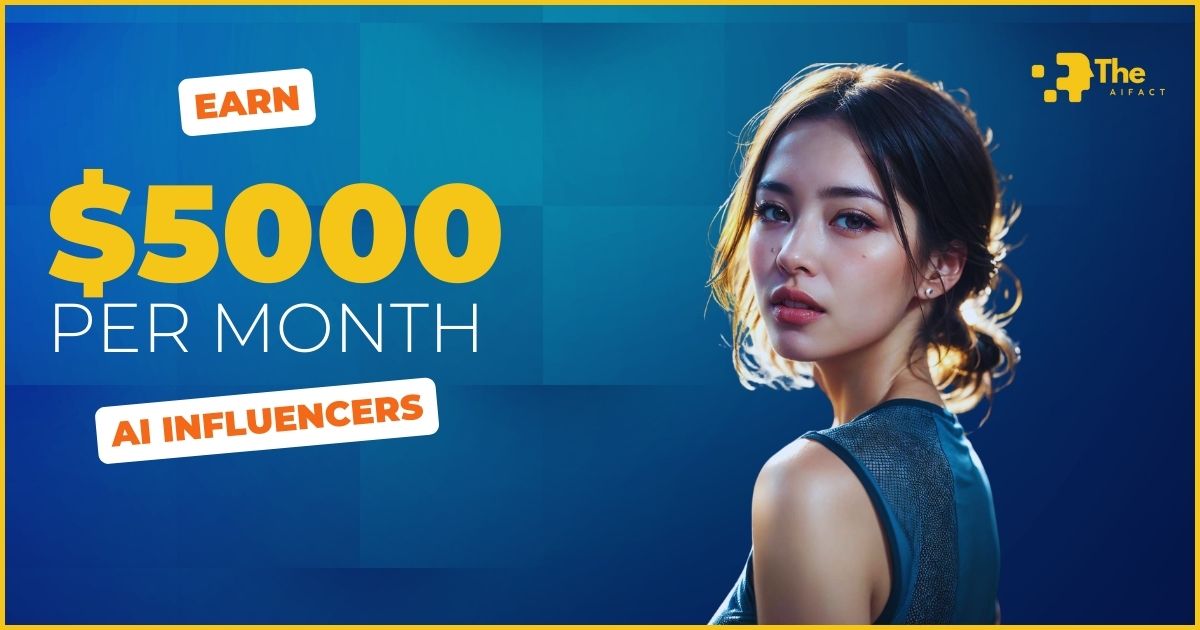The digital landscape is evolving, and AI influencers are leading the charge on social media. The wonders of artificial intelligence craft these virtual personas. I have started to mingle with human content creators, blurring the lines between reality and digital fabrication.
Their rise is not just a novelty; it’s a glimpse into a future where digital entities can engage audiences just as effectively as their human counterparts.
The allure of AI-generated characters lies in their limitless potential. They can be anyone, do anything, and exist anywhere, making them a perfect vessel for creative storytelling and brand promotion.
Imagine crafting a persona that embodies your brand’s values or a character that lives out thrilling adventures through AI’s power. The possibilities are as vast as your imagination.
Today, I’m excited to take you on a journey through the creation of your very own AI influencer. We’ll dive into image and video creation, transforming the abstract into the hyper-realistic.
Whether you’re here to innovate your content strategy or simply to explore the cutting edge of digital creativity, you’re in for a treat. Let’s embark on this creative odyssey together and unlock the full potential of AI in social media.
Read more:
Step 1: Gathering Your Source Image
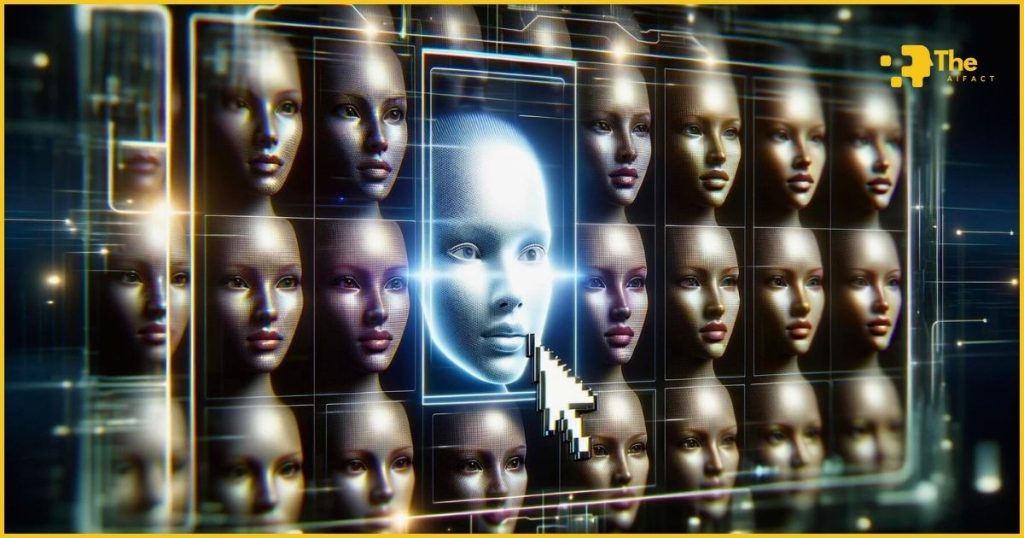
Creating an AI influencer begins with a pivotal step: selecting a high-quality source image. This initial choice is more than just picking a photo. It’s about laying a solid foundation for your digital persona.
A crystal-clear, high-resolution image isn’t just recommended; it’s essential. Quality is critical in setting the stage for more realistic and engaging content.
How do we conjure a face that doesn’t exist in the real world but holds the power to captivate real audiences? The answer lies in AI-generated imagery. Tools like Midjourney or other AI image generators are our allies in this creative quest.
They enable us to create faces that are not only unique but also imbued with a level of authenticity that resonates with viewers.
Here’s how to start:
- Choose an AI image generator. Midjourney, available through Discord, is a fantastic option for those who seek precision and variety. Alternatively, free AI image generators online can serve as a solid starting point.
- Aim for a face that looks directly at the camera, akin to a passport photo but with more life. This direct gaze is crucial for creating a connection with your audience.
- Input your preferences or select a reference image that closely matches the vibe you’re aiming for. Then, let the AI work its magic.
Selecting the best image involves a keen eye for detail. Look for an AI-generated face that appeals to you and feels genuine. It should be a face that tells a story, one that viewers can form an attachment to.
Remember, the more realistic and relatable your AI influencer, the more robust the engagement with your audience.
Here are a few tips for making that all-important choice:
- Look for consistency in facial features and expressions. Your influencer’s face should be versatile enough to fit a range of emotions and settings.
- Consider the uniqueness of the face. You want your AI influencer to stand out in a crowded digital space.
- Evaluate the image’s adaptability. Can it be easily integrated into various backgrounds and scenarios? This flexibility is critical for creating diverse content.
Embarking on the path to creating your AI influencer with a robust and captivating source image sets the tone for everything that follows. It’s the first step in a journey that promises endless creativity and engagement.
Step 2: Gathering Your Target Images
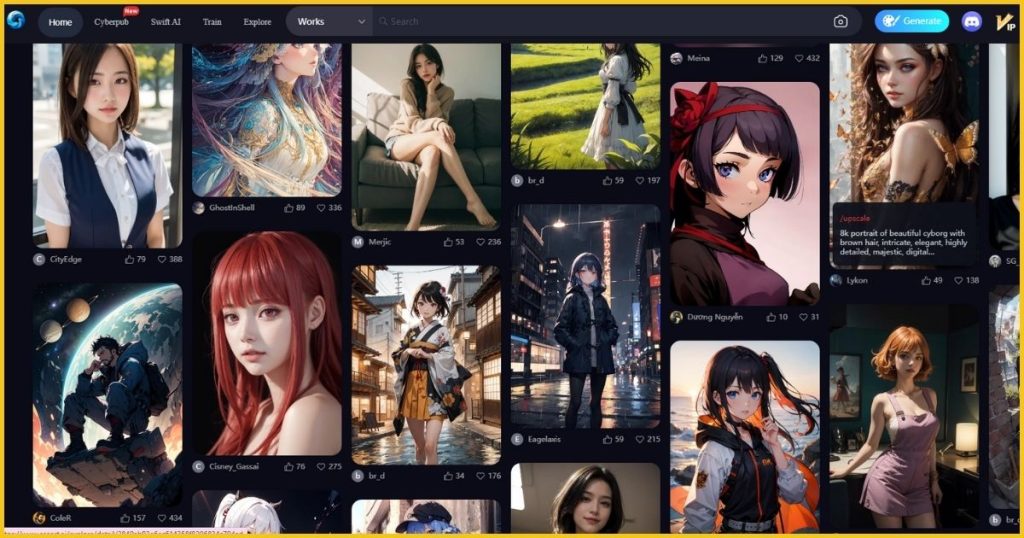
Once you’ve secured your source image, the next step is to collect target images. These images are crucial. They form the visual variety your AI influencer will need to maintain a dynamic and engaging presence across social media platforms.
But consistency is key. The challenge lies in creating various images that still feel cohesive, as if they’re snapshots of the same person’s life.
Target images serve a dual purpose.
- First, they provide the diverse backdrops and scenarios in which your AI influencer will appear, from the glitz of high-fashion photoshoots to the casual charm of everyday life.
- Second, they ensure that despite the variety, there’s a unifying visual identity that audiences can recognize and connect with.
Finding suitable models with specific attributes can be streamlined using platforms like SeaArt.ai. These AI-driven platforms are treasure troves of imagery that can be tailored to match your influencer’s appearance and essence.
Are you looking for a blonde-haired model to check your AI-generated face? A quick search on SeaArt can yield many images that fit the bill.
Here’s how to make the most of these platforms:
- Define the attributes of your AI influencer that you want to emphasize. This could be hair color, style, or even vibe.
- Use attributes as search terms in SeaArt or a similar platform. The specificity of your search can significantly influence the relevance of the results.
- Experiment with different prompts. If your initial search brings back a model in a mall setting. But tweak the prompt if you envision your influencer in a more vibrant scene. Instead of “mall,” try “nightclub” or “city street at dusk.” This simple change can dramatically alter the context and feel of the images.
Adapting prompts to generate varied yet consistent images is an art form. It involves:
- Playing with scenarios: Keep the essence of your influencer consistent, but change the environment. This keeps the content fresh yet recognizable.
- Adjusting the mood and lighting: Matching these aspects in your target images can help maintain visual consistency across different settings.
- Varying poses and expressions subtly: This ensures your influencer appears versatile and dynamic, capable of fitting into any narrative you wish to tell.
In crafting a gallery of target images, you’re building a wardrobe of virtual experiences for your AI influencer.
Each image should be a thread in the larger tapestry of their online persona, distinct yet harmoniously woven together.
This steps are not just about collecting images; it’s about curating a visual narrative that captivates and engages.
Step 3: Image Creation Through Face Swapping
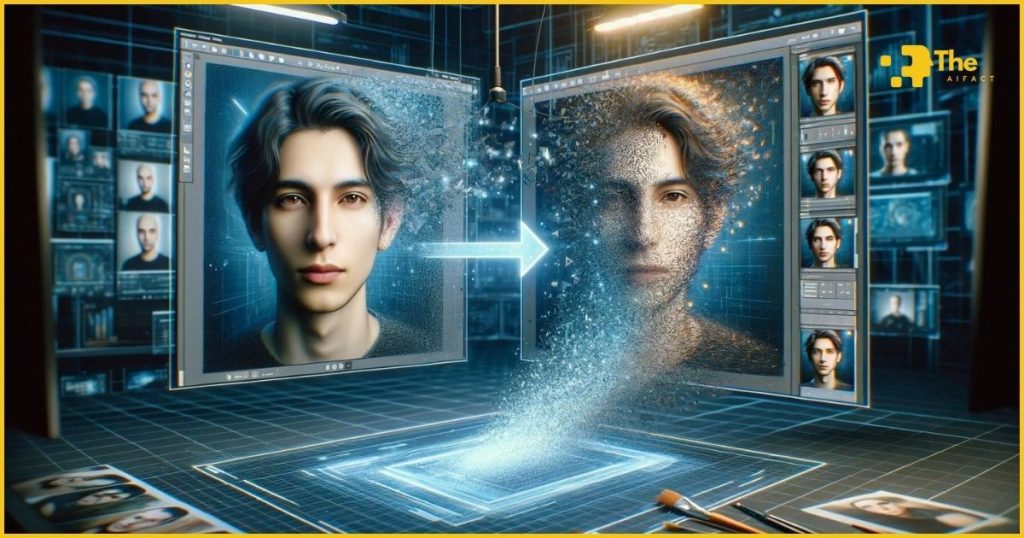
With your arsenal of source and target images ready, we now venture into the heart of creating your AI influencer’s content: face swapping.
This transformative step is where your virtual persona truly comes to life, as their unique face is melded with various scenarios and expressions. The tools of choice for this magic?
Midjourney and specialized face-swapping bots are integral for crafting personalized, engaging content that resonates with audiences.
Why Midjourney and Face Swapping? Midjourney and face-swapping technology allow for seamlessly integrating your AI-generated face into any target image.
This fusion creates authentic-looking photos that maintain the identity of your influencer across diverse contexts. It’s the digital alchemy that turns your collection of images into a consistent, believable persona.
Setting Up for Success:
- Create a Midjourney Discord Server: Start by setting up your own Discord server where you’ll conduct your creative experiments. This is as simple as clicking the plus icon on the Discord interface and following the prompts to create a new server.
- Invite the Midjourney Bot: Navigate to the official Midjourney Discord server to find the Midjourney bot. Invite it to your server to harness its image-generation prowess directly within your workspace.
- Integrate a Face Swap-Bot: The guide to adding a face swap-bot is typically found in the bot’s GitHub repository or official website. Follow the instructions to add this bot to your server, enabling the critical functionality for personalizing your content.
Executing the Face Swap:
- Initiate with a Slash Command: Most bots operate with slash commands. Begin by typing /saving ID followed by your chosen identifier (e.g., Social girl for a project name).
- Upload Your Source Image: Drag and drop your AI-generated source image when prompted. This registers the face with the bot.
- Begin the Swap: With your source face registered, initiate a swap by entering a command like /swap ID, followed by the identifier. Then, upload a target image. The bot works its magic, replacing the original face with your AI-generated one.
Learning from Examples:
- Successful Swaps: These are your gold standard, where the AI influencer’s face blends seamlessly into the target image, matching lighting, angle, and expression for a believable result.
- Less Successful Swaps: Sometimes, the result might be flawed. The lighting may be off, or the angle doesn’t match, leading to a less convincing swap. These are valuable learning opportunities. Analyzing why a swap didn’t work as expected can offer insights into selecting better target images or adjusting your source image for future attempts.
Tips for Better Swaps:
- Consistent Lighting: Ensure the lighting in your source and target images matches as closely as possible.
- Angle Alignment: The angle of the face in your source image should closely mirror that of the model in your target image.
- Expression Synergy: A smiling face swapped with a somber expression can look out of place. Aim for emotional consistency.
Image creation through face swapping is both an art and a science. It requires combining technical skills with the bot tools and an artistic eye for detail.
As you refine your technique, your AI influencer will emerge as a cohesive, engaging personality ready to make their mark on the digital world.
Step 4: Video Creation with Google Colab
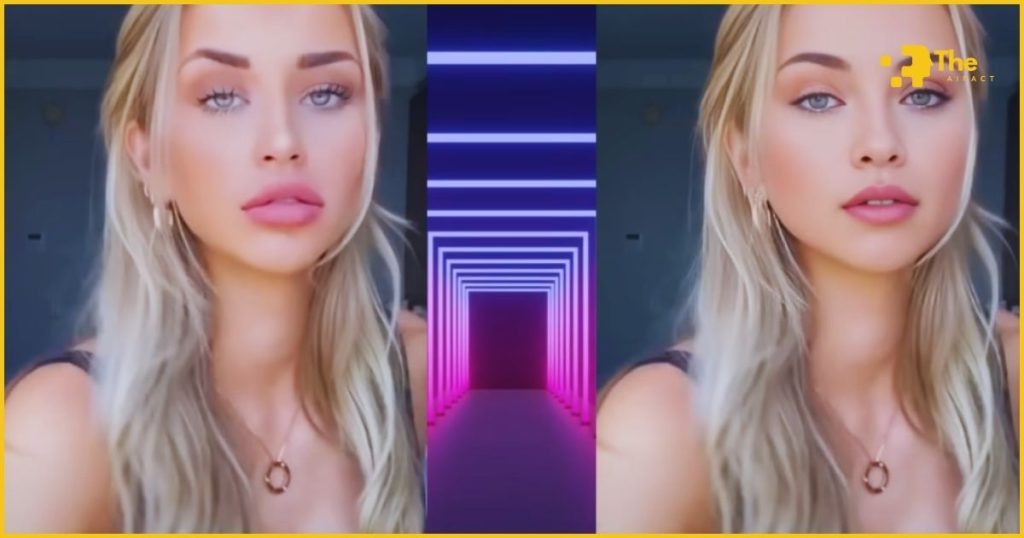
After mastering still images, video content is the next frontier in bringing your AI influencer to life. Videos offer a dynamic, engaging way to connect with audiences, showcasing your AI influencer in action.
Google Colab, a free Jupyter Notebook service that supports machine learning and data analysis, has become our studio for this venture.
It offers the computational power and flexibility for video face swapping, transforming static personas into moving, talking characters.
Why Video? Video content adds depth to your AI influencer’s persona, allowing for storytelling and engagement that images alone can’t achieve.
It’s about making your creation seen, heard, and felt, significantly impacting viewer engagement and emotional connection.
Sourcing Target Videos:
- Find Relevant Content: Look for videos that match the vibe and context you envision for your AI influencer. These can be stock videos, Creative Commons content, or original footage.
- Consistency: Ensure the video’s style, lighting, and setting are distinct from your influencer’s established image. Consistency across media types strengthens brand identity.
- Quality Matters: High-resolution videos work best for face swapping, producing smoother, more realistic outputs.
Using Google Colab for Face Swapping:
- Access a Suitable Notebook: Search for a Google Colab notebook for video face swapping. These notebooks contain pre-written code and instructions.
- Prepare Your Files: You’ll need a clear, front-facing source image of your AI influencer and the target video file. Ensure both are readily accessible.
- Upload and Run: Follow the notebook’s instructions to upload your source image and target video. Run the code cells sequentially, adjusting parameters for your specific project.
Troubleshooting Tips:
- Video Quality: If the output video seems low quality or the face swap isn’t convincing, check your source images and target video’s resolution. Higher-quality inputs usually result in better outputs.
- Processing Time: Video processing is computationally intensive. More extensive videos take longer to process. If the Colab session disconnects or runs out of memory, use shorter video clips or adjust the settings to lower the computational load.
- Matching Issues: The source image and the person in the video should have similar orientations and expressions for best results. If the swap looks off, consider using a different source image or target video that aligns better with your AI influencer’s look.
Creating video content through Google Colab opens up a world of possibilities for your AI influencer, from scripted skits and product demos to virtual meet-and-greets.
While it requires more technical prowess and patience than image creation, the payoff in audience engagement and the depth of character for your AI influencer can be immense.
As you iterate and refine your process, you’ll find that each video brings your digital persona closer to the hearts and minds of your audience.
Step 5: Creating Your AI Influencer’s Bio and Name
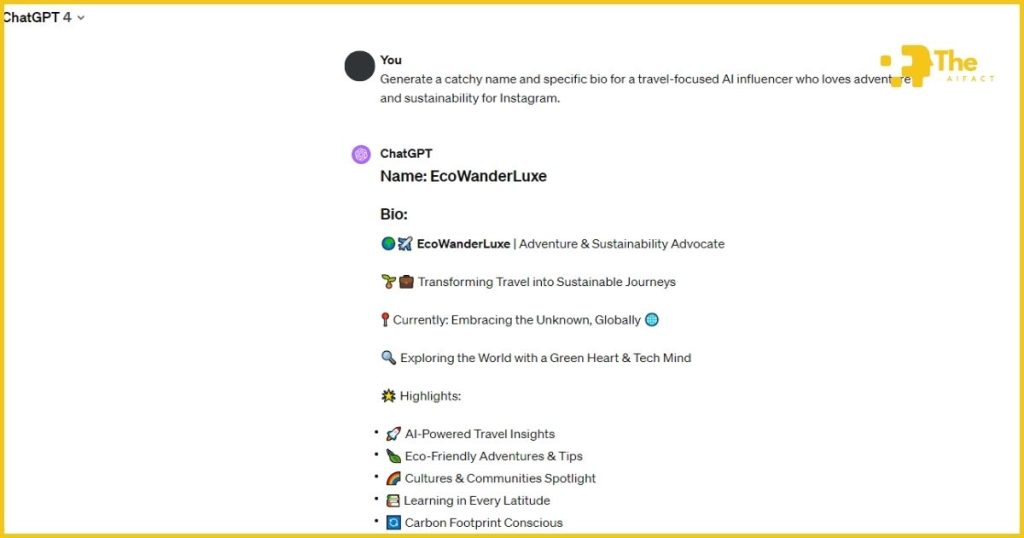
Crafting a compelling bio and selecting the perfect name is crucial in shaping the identity of your AI influencer. This step goes beyond aesthetics and functionality.
It’s about infusing your digital creations with personality and story, making them relatable and memorable to your audience.
A well-chosen name can capture the essence of your influencer, while a thoughtfully written bio can build a connection, inviting followers to engage more deeply with the content.
I. The Power of a Catchy Name:
A name is the first impression your AI influencer makes. It needs to be catchy, easy to remember, and reflective of the persona you’ve created.
Consider the niche your influencer operates in and the characteristics that define them. Is there a play on words that could work?
Does the name resonate with the target audience? A good name sticks in the mind and sets the stage for the influencer’s brand.
II. Crafting a Relatable Bio:
The bio is your opportunity to tell a story in a few sentences. It should genuinely and engagingly highlight the influencer’s backstory, interests, or mission.
This narrative doesn’t just inform; it bridges the gap between AI and humans. Consider what makes your influencers unique and how they relate to their followers.
Are they adventurers at heart, fashion icons, or tech whiz? Use these traits to build a bio that resonates.
III. Using AI for Creative Inspiration:
Leveraging AI tools like ChatGPT can streamline the creative process, offering many ideas for names and bios.
For example, you can input the characteristics of your influencer, their niche, and any relevant keywords and ask for name suggestions or bio drafts.
These AI-generated ideas can serve as a foundation, which you can refine to match your vision perfectly.
Example Process:
- Define Your Influencer’s Core Characteristics: Note down key attributes, interests, and the target audience of your influencer.
- Generate Ideas with ChatGPT: Input these details into ChatGPT, asking for name suggestions and bio drafts. For instance, “Generate a catchy name and bio for a travel-focused AI influencer who loves adventure and sustainability.“
- Refine and Personalize: Select the most resonant suggestions and tweak them to suit your influencer’s image and voice perfectly.
Creating a bio and name for your AI influencer isn’t just a box to tick off; it’s an opportunity to deepen the narrative and make your digital persona stand out in a crowded social media landscape.
This simple step can significantly impact how the audience perceives and engages your influencer.
With the correct name and bio, your AI influencer becomes more than just a collection of pixels and algorithms. But a character with a story ready to make their mark on the world.
Step 6: Creating a Social Media Account
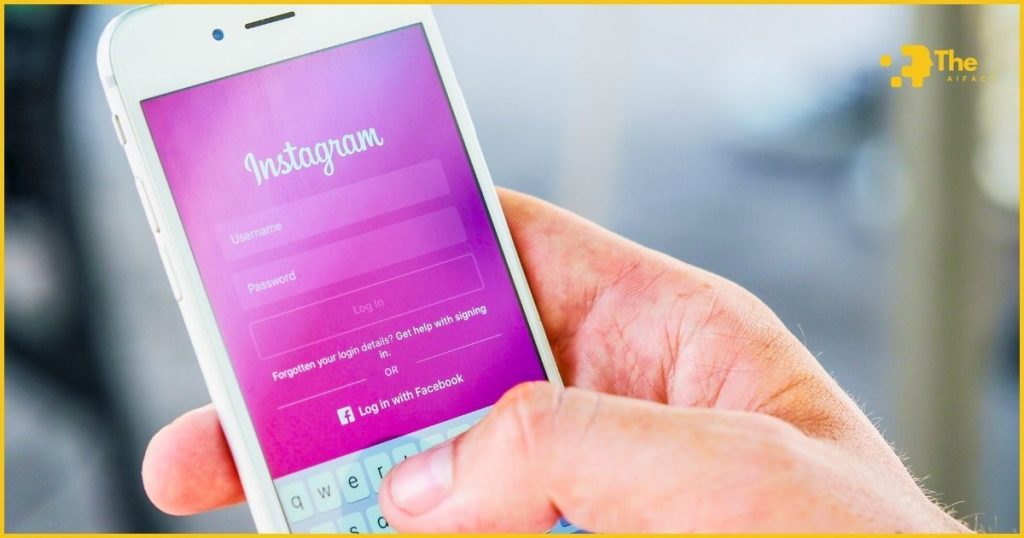
The final piece of the puzzle in launching your AI influencer is setting up their social media presence. Platforms like Instagram and TikTok are prime stages for influencers, offering vast audiences and dynamic content capabilities.
However, creating and maintaining a successful social media profile for an AI influencer comes with unique challenges and considerations.
Let’s explore the best practices and tips to navigate these waters smoothly.
I. Best Practices for Social Media Setup:
- Choose the Right Platform: Consider where your target audience spends their time. Instagram is great for visually driven content, while TikTok favors short, engaging videos. Your platform choice should align with your content strategy and the strengths of your AI influencer.
- Optimize Your Profile: Use a high-quality profile picture, likely the source image of your AI influencer. Craft a bio that succinctly captures their persona, leveraging the creativity discussed in Step 5. Ensure the bio includes keywords relevant to your influencer’s niche for better discoverability.
- Consistent Branding: Maintain visual and thematic consistency across all content. This includes using a cohesive color scheme, style, and tone of voice that reflects your influencer’s brand identity.
II. Navigating Challenges and Tips:
- Account Verification: Some platforms may require phone or email verification to set up an account. Be prepared with a dedicated email address for your influencer, and consider how you’ll manage verification steps.
- Content Planning: Develop a content calendar to ensure a steady stream of posts. Use scheduling tools available within the platforms or third-party apps to keep your posting consistent.
- Engagement: Engage with followers by responding to comments, liking posts, and following relevant accounts. This can be more challenging with an AI influencer, so consider setting aside time for manual engagement or exploring AI-driven solutions for simple interactions.
- Platform Policies: Be aware of each platform’s policies regarding AI-generated content. Some platforms may have specific rules about disclosing AI-generated nature or commercial use. Ensure compliance to avoid account restrictions or bans.
- Analytics and Adaptation: Use the analytics tools provided by social media platforms to track the performance of your posts. Pay attention to what works and what doesn’t, and be prepared to adapt your strategy accordingly.
III. Creating a Cohesive Launch Plan:
Launching your AI influencer successfully involves more than just setting up a profile. Consider a launch campaign that could include teasers of upcoming content, collaborations with human influencers, or participation in trending challenges to gain initial visibility.
IV. Dealing with Feedback:
Be prepared for mixed reactions from the audience. Transparency about your influencer’s AI nature can help set expectations, but always be ready to manage feedback positively, using it to improve and refine your approach.
FAQs
Q1: Is creating an AI influencer expensive?
A1: The cost can vary widely depending on the tools and resources you use. Many AI image and video generation platforms offer free versions or trials, but premium features require a subscription. Additionally, face-swapping and video editing software may have associated costs. Creating an AI influencer can be relatively low-cost, especially compared to traditional content production involving human models.
Q2: Do I need advanced technical skills to create an AI influencer?
A2: Not necessarily. Many tools designed for creating AI-generated content are user-friendly, with communities and tutorials to help beginners. Some familiarity with digital content creation tools will be beneficial, but you can be something other than a programmer or AI expert to get started.
Q3: How do I ensure my AI influencer remains unique?
A3: To ensure uniqueness, focus on creating a detailed and specific persona for your AI influencer, including a distinctive visual style, backstory, and personality traits. Use original AI-generated images and customize your content to reflect your influencer’s unique identity. Regularly update and evolve your influencer’s content to keep it fresh and distinctive.
Q4: Are there ethical considerations in creating AI influencers?
A4: Yes, ethical considerations include transparency about the AI nature of the influencer, respecting copyright laws when using or generating content, and considering the impact of your AI influencer on public perception and social norms. It’s essential to be transparent with your audience that your influencer is AI-generated and to use this technology responsibly.
Q5: Can AI influencers be monetized?
A5: Absolutely. AI influencers can be monetized in much the same way as human influencers. This includes brand partnerships, sponsored content, merchandise, and even appearances in digital or virtual events. However, monetization strategies should be approached with transparency and ethical considerations.
Q6: How do AI influencers engage with their audience?
A6: AI influencers can engage with their audience through programmed responses, AI-driven chatbots, or manual management by their creators. The key is to maintain a consistent tone and personality that matches the influencer’s persona. Engagement should be planned carefully to provide a blend of authenticity and interactivity.
Final Thought: Create Hyper-Realistic AI Influencers
We’ve journeyed through the innovative process of creating an AI influencer, from crafting the initial source image to launching a vibrant social media presence.
This journey underscores the incredible potential of AI in reshaping how we engage with content and audiences on digital platforms.
By utilizing AI to generate realistic images and videos, we’ve unlocked new realms of creativity, allowing for the creation of influencers who can captivate audiences with their unique personalities and stories.
The steps we’ve covered provide a foundation for anyone looking to dive into the world of AI-generated content:
- Gathering Your Source Image: Laying the groundwork with a high-quality, AI-generated face.
- Gathering Your Target Images: Building a visually cohesive library of images for content creation.
- Image Creation Through Face Swapping: Personalizing your content with cutting-edge face-swapping technology.
- Video Creation with Google Colab: Bringing your AI influencer to life with dynamic video content.
- Creating Your AI Influencer’s Bio and Name: Crafting a relatable and memorable identity.
- Creating a Social Media Account: Establishing a presence where your AI influencer can engage with the world.
The potential of AI influencers is boundless. They offer a unique blend of consistency, versatility, and scalability that traditional content creation methods can’t match.
As technology advances, so will the capabilities and realism of AI-generated personas, opening up new avenues for storytelling, marketing, and personal expression.

